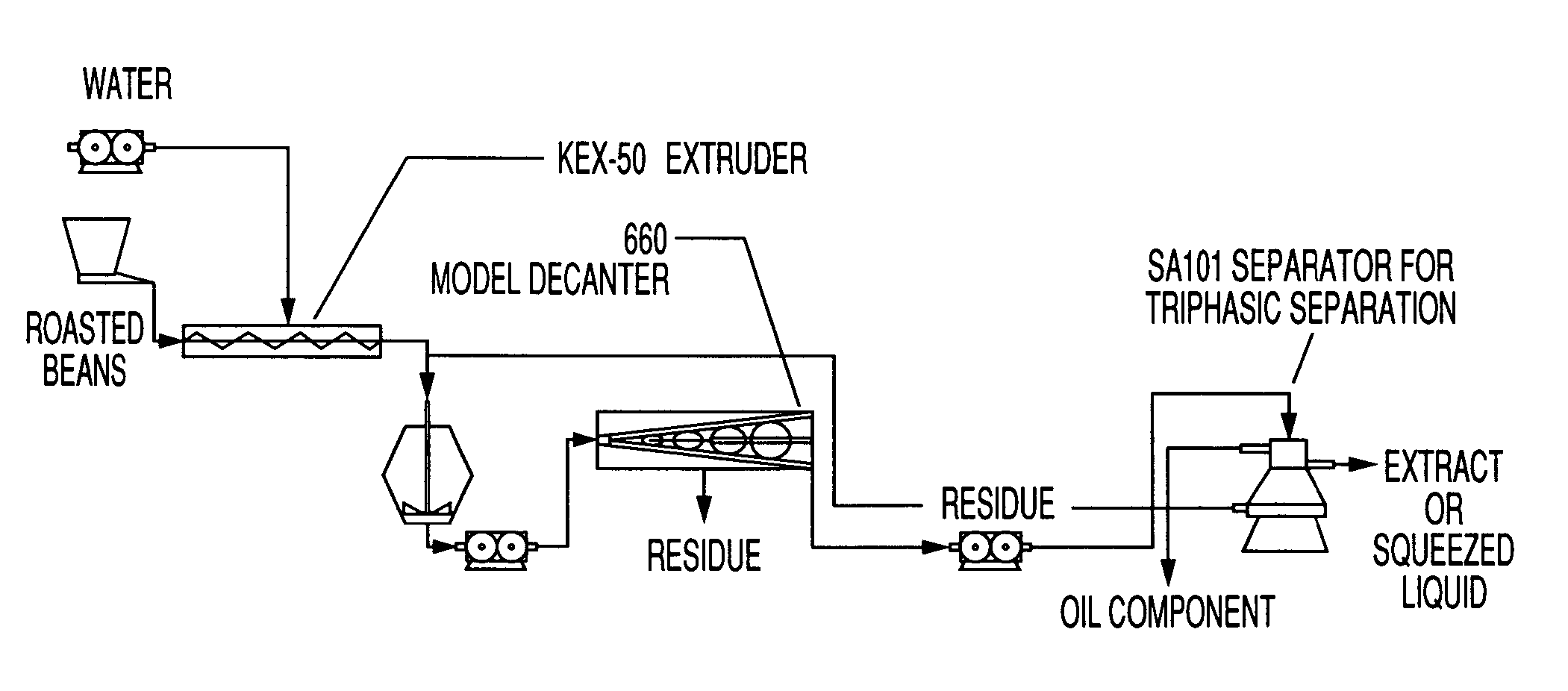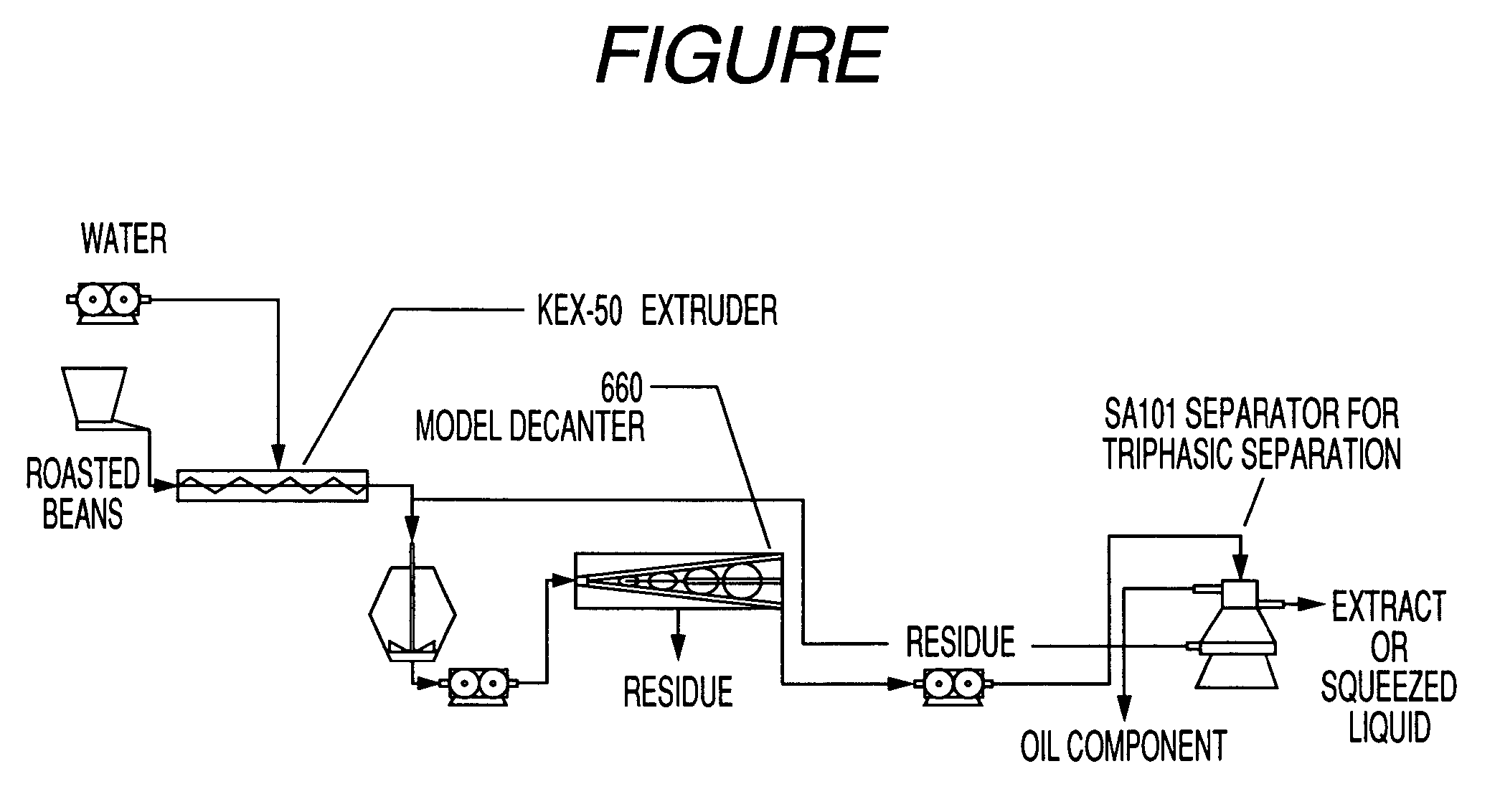Method for producing an extract of coffee beans
a technology of extract and coffee beans, which is applied in the field of producing an extract of coffee beans, can solve the problems of deterioration in flavor and loss of aroma fragrant components, takes a long time to completely drain the liquid, and residues do not reach the state where the liquid is, so as to achieve extremely efficient continuous mass production, prevent deterioration in flavor, and economic efficiency
- Summary
- Abstract
- Description
- Claims
- Application Information
AI Technical Summary
Benefits of technology
Problems solved by technology
Method used
Image
Examples
example 1
[0054]Using KEX-50 (manufactured by Kurimoto, Ltd.) as a twin-screw extruder, a 12 mm-pitch paddle screw was installed in each of second, third and fourth barrel sections, and a 16 mm-pitch reverse screw was installed immediately below the downstream section of the paddle screw of each of the third and fourth barrel sections, thereby enhancing kneading ability. Also, the speed of rotation of the screw was set up at 220 rpm, and the barrel temperature was set up at 20° C.
[0055]Coffee beans produced in Colombia, which had been roasted so as to have an L value of 21 and was not crushed, were used as coffee beans and bed into a first barrel section of the twin-screw extruder at a rate of 28.6 kg / h using a vibration feeder. The roasted beans were forcedly sent into a narrow gap and crushed by rotation of the screw.
[0056]Thereafter, water at 20° C. was added at a rate of 171.4 kg / h from the second barrel section, thereby subjecting the crushed roasted coffee beans to shearing, kneading an...
example 2
[0070]In the same manner as in Example 1, green tea (green tea of middle grade, produced in Shizuoka prefecture, Japan) was bed in to an extruder at rate of 5.88 kg / h. Deionized water at 20° C. was added at a rate of 194.12 kg / h and tea was sheared, followed by kneading and emulsification. In the extruder, tea was milled to have a mean particle about from 30 to 40 μm, and provided for extraction. The thus obtained solid-liquid suspension was charged in a decanter and treated, followed by charging in the separator for triphasic separation to separate the residue and scum. An extract from the separator outlet was continuously subjected to filter treatment by using a liquid filter back 525 (Sumitomo 3M). The thus obtained tea extraction liquid had good flavor and fresh green tea fragrance, and bitter taste was suppressed. Therefore, the liquid had clean taste with rich flavor. Additionally, the water content in the residue extracted from a decanter was 30%. Conditions were the same as ...
PUM
 Login to View More
Login to View More Abstract
Description
Claims
Application Information
 Login to View More
Login to View More - R&D
- Intellectual Property
- Life Sciences
- Materials
- Tech Scout
- Unparalleled Data Quality
- Higher Quality Content
- 60% Fewer Hallucinations
Browse by: Latest US Patents, China's latest patents, Technical Efficacy Thesaurus, Application Domain, Technology Topic, Popular Technical Reports.
© 2025 PatSnap. All rights reserved.Legal|Privacy policy|Modern Slavery Act Transparency Statement|Sitemap|About US| Contact US: help@patsnap.com


